Nicosia is the capital of Cyprus and Nicosia is the only still divided capital in the world. This status quo is certainly known to every tourist visiting the Mediterranean island. Less well known is how easy it is for EU citizens to cross the border that runs right through the middle of Nicosia’s old town and get their own picture of both sides of the city, and indeed the entire island.
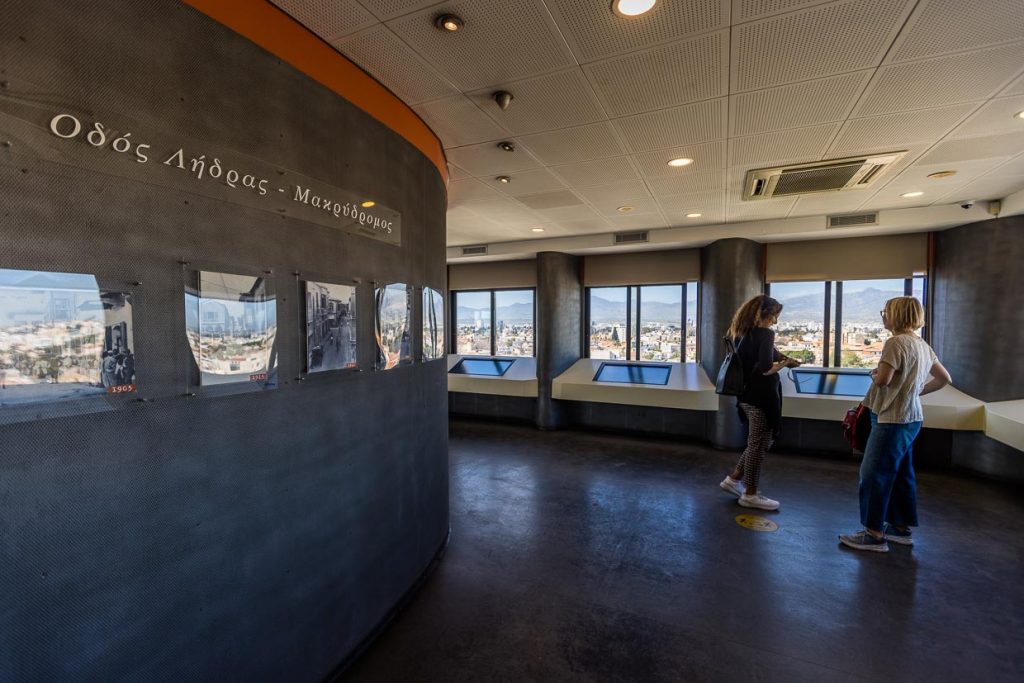
Border in mind
So far, it is rather the case that when preparing for a trip to Cyprus, a border builds up in one’s mind almost unnoticed. Greek-Cypriot sources praise the attractions in the south of the island, Turkish-Cypriot travel tips focus on the sights in the north. Hardly any offers combine destinations in the north with excursions to the south or vice versa. The Green Line, which has divided the island since 1964, also seems to set limits to one’s own vacation. But this does not have to be the case. Whether you choose a hotel in the south or accommodation in the north of Cyprus, whether you arrive at Larnarca airport in the south or Ercan airport in the north, you can get to know the whole island without any major problems. The best place to start is Nicosia. Curiosity and an identity card are enough.
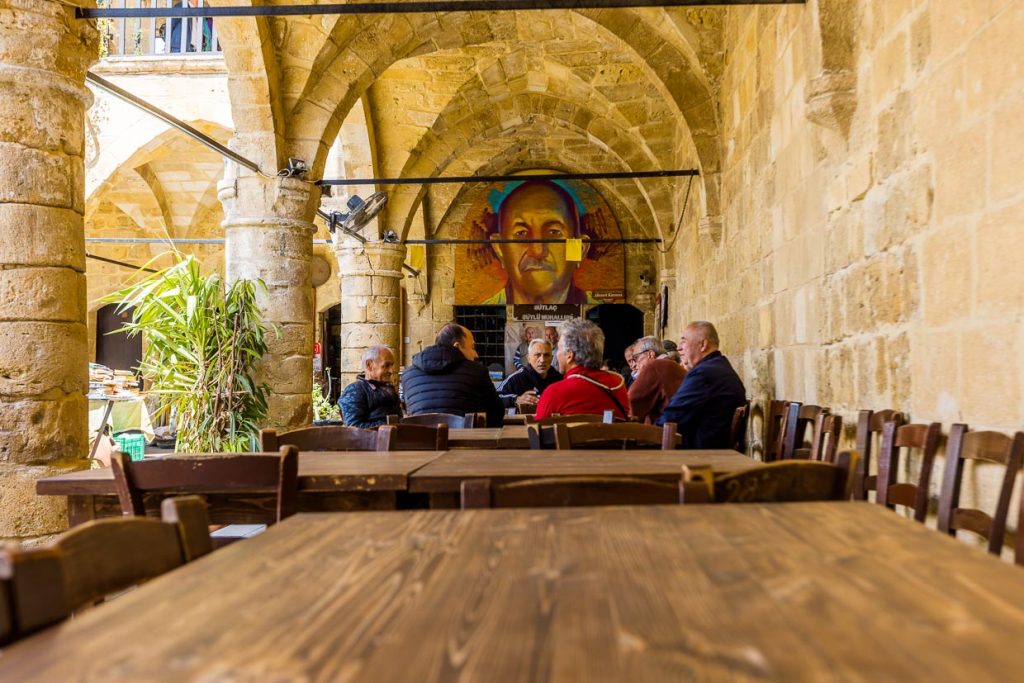
The split fried egg
Nelin Tunç stands in front of a map of the city, showing Nicosia in all its outline, with fortified walls and jagged towers once built by the Venetians to ward off Ottoman conquest. They failed, but that’s another episode in Cyprus’ troubled history. What is really remarkable about this map is the complete illustration of the old town of Nicosia. Nelin Tunç is a certified guide, more than that, she is a Northern Cypriot, grew up in Nicosia and dedicated her thesis in architecture to her hometown. It’s hard to imagine more expertise for a city tour.
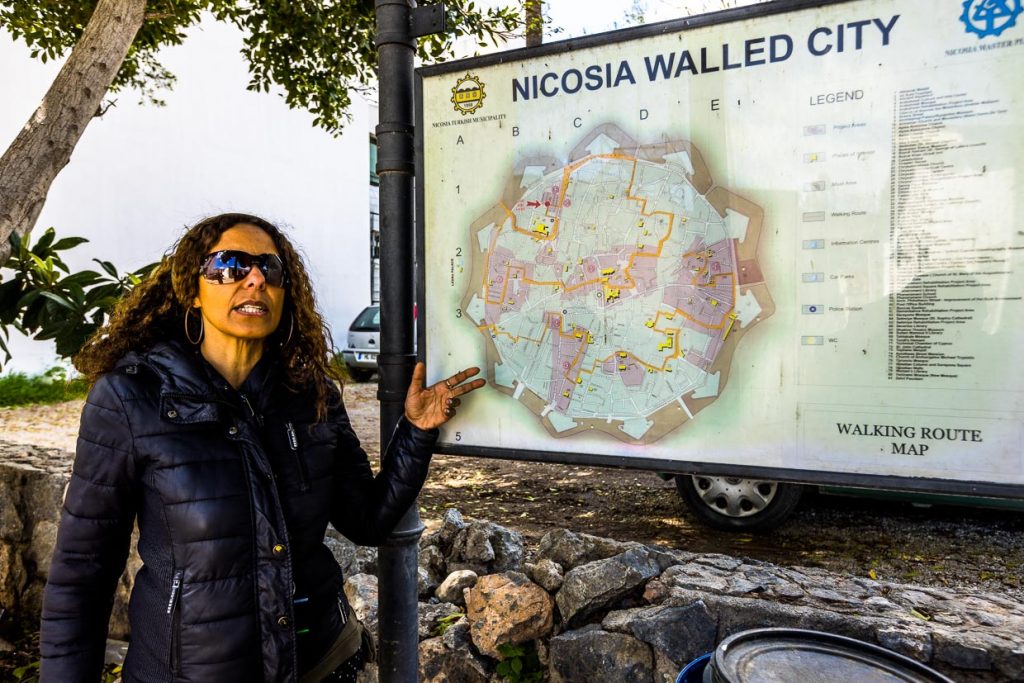
We are standing in the Bandabulya, the large market hall in the northern part of Nicosia. Nelin Tunç points to a map of the city, “If the Old City is a fried egg, then we are standing in the yolk.” Already during the Ottoman rule (1571-1878), there was a bazaar on this spot. During the British administration (1878 – 1959) the big market hall was built. The main entrance at that time is now a dead end and ends directly at the Green Line. The circular city center with a diameter of 1.6 kilometers and a circumference of 5 kilometers along the old city wall has been cracked since 1964. At the time, a British major general drew the Green Line through the middle of Nicosia’s winding alleys to pacify the escalating civil war between Greek and Turkish Cypriots. Streets became dead ends, with barbed wire barricades erected at the end.
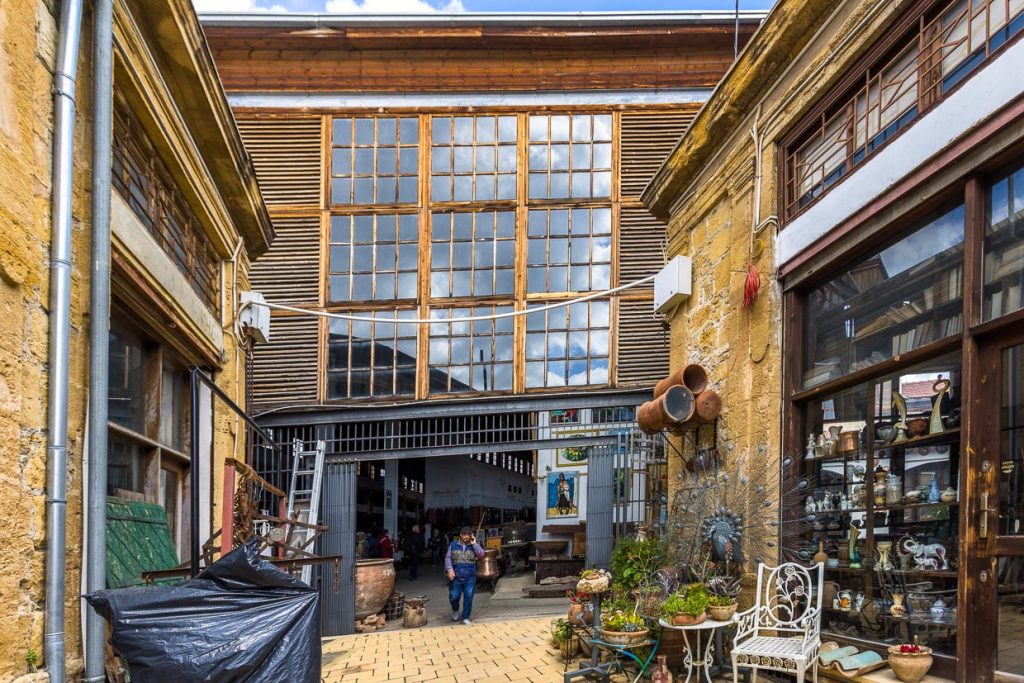
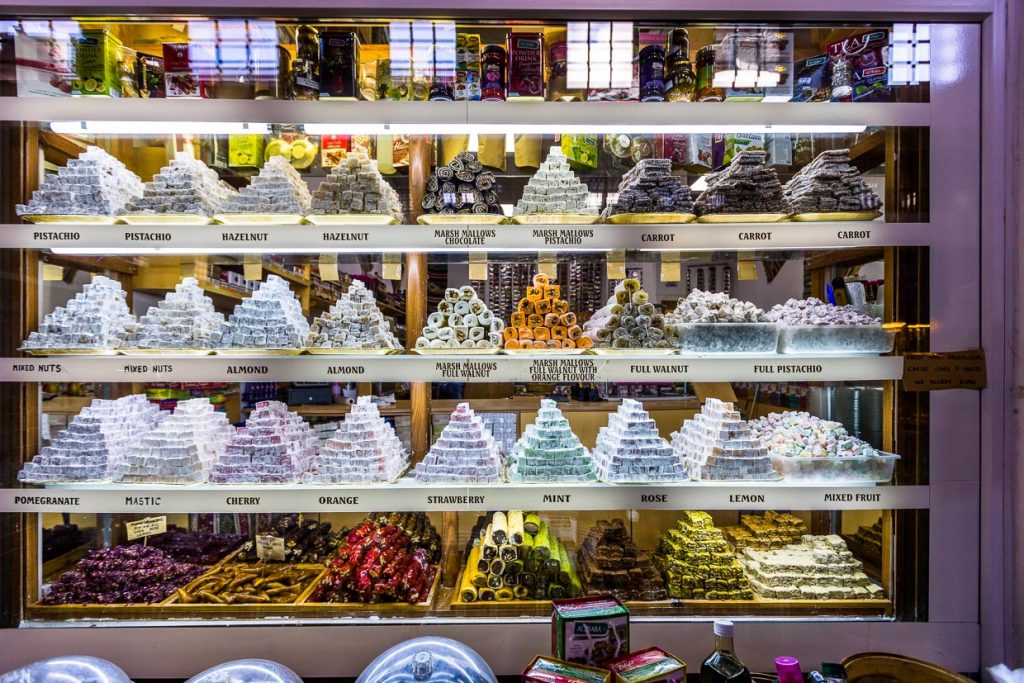
Thus, when walking through Nicosia, one encounters this one border on both sides. Nelin Tunç deliberately does not leave it out. Again and again, one looks into dead ends, sees bay windows and balconies in no man’s land or a church whose nave lies in the buffer zone but is accessible through the main portal in the south of the city. Significant buildings such as the Büyük Han, the great caravanserai, the British colonial-era courthouse, or St. Sophia Cathedral and present-day Selimiye Mosque are located in the north of the city. The atmosphere in the northern old town is bustling oriental and serene at the same time. The alleys are full of life, textile merchants offer African fabrics, fashion fumbles, fake luxury labels, towels, basketry or fresh vegetables. In between, coffee shops, restaurants and vendors offering samples of baklava and Turkish Delight.
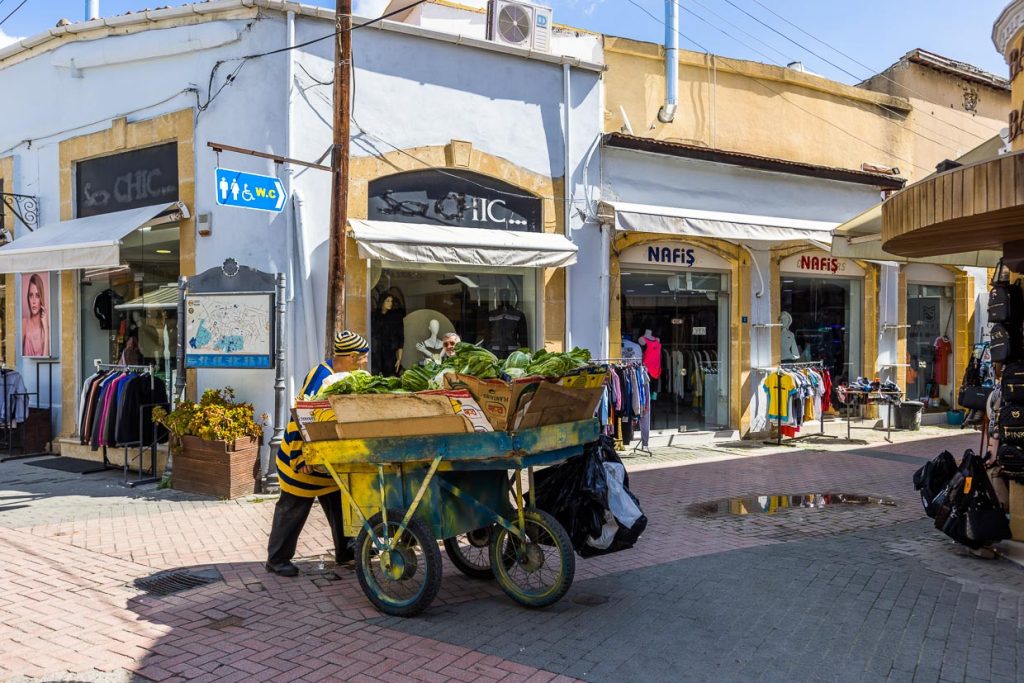
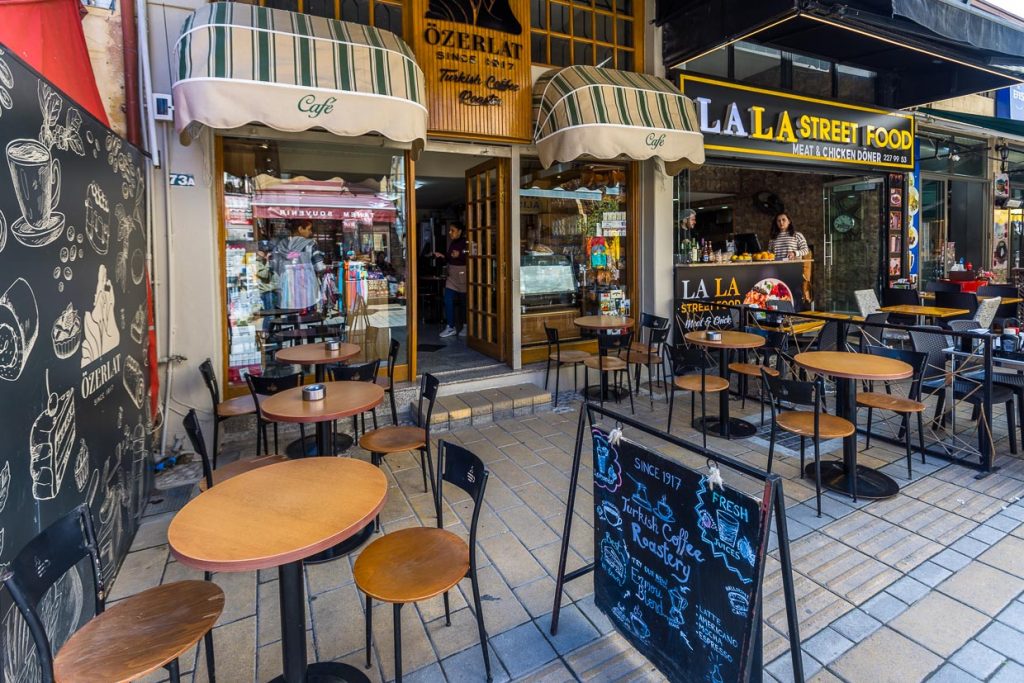
Crossing Point Ledra Street Lokmaci Gate
Since 2008 it is also possible for tourists to cross the border between North and South Cyprus. Nowhere is this easier than in the old town of Nicosia. On foot and with the ID card you showed when entering the country, you can be in the other part of town in just a few minutes. The checkpoint is called Ledra Street in the south and Lokmaci Gate in the north. Nelin Tunç regularly guides participants from the south through the old city. Mostly they are tourists who do not want to miss the worth seeing north of Nicosia on their trip. Sometimes, however, they are also elderly Cypriots who, after long years of procrastination, make an effort to visit the northern part of Nicosia to review their memories.
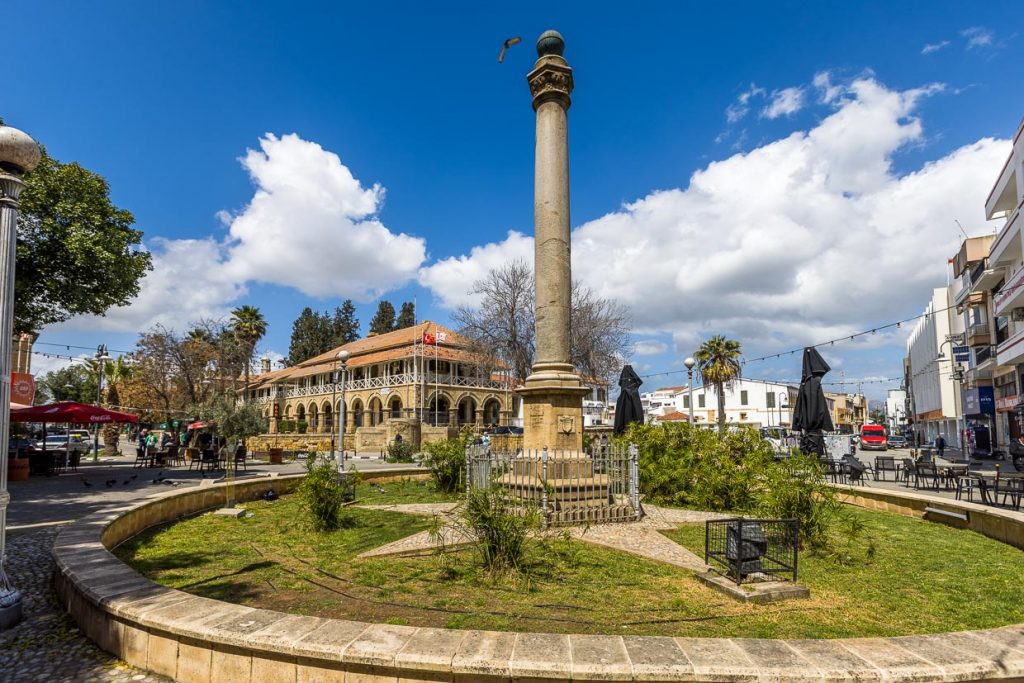
It is highly recommended to see both sides of Nicosia. On one as well as on the other side of the barricades are the same houses. The massive sandstone buildings from the British colonial period are particularly striking. The closer the houses are to the border, the more dilapidated they look. On both sides, people have begun to restore the houses.
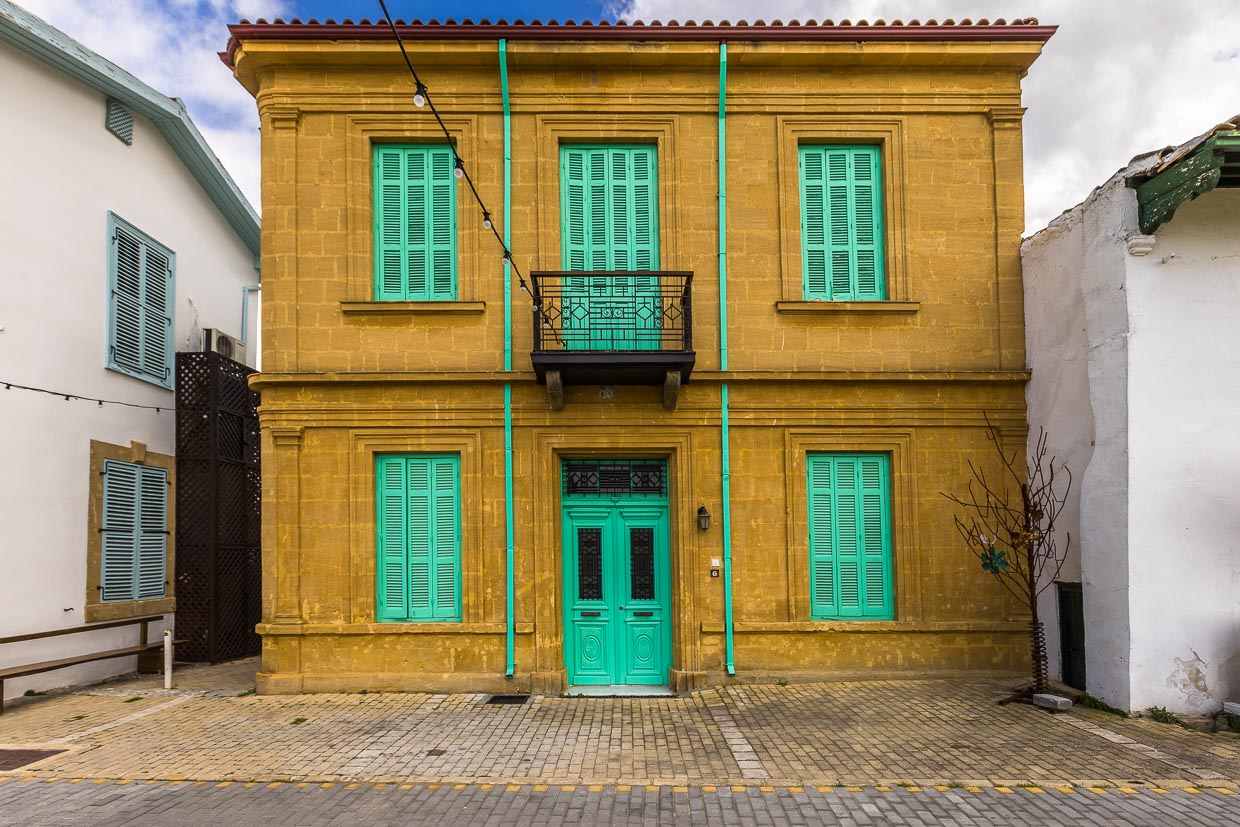
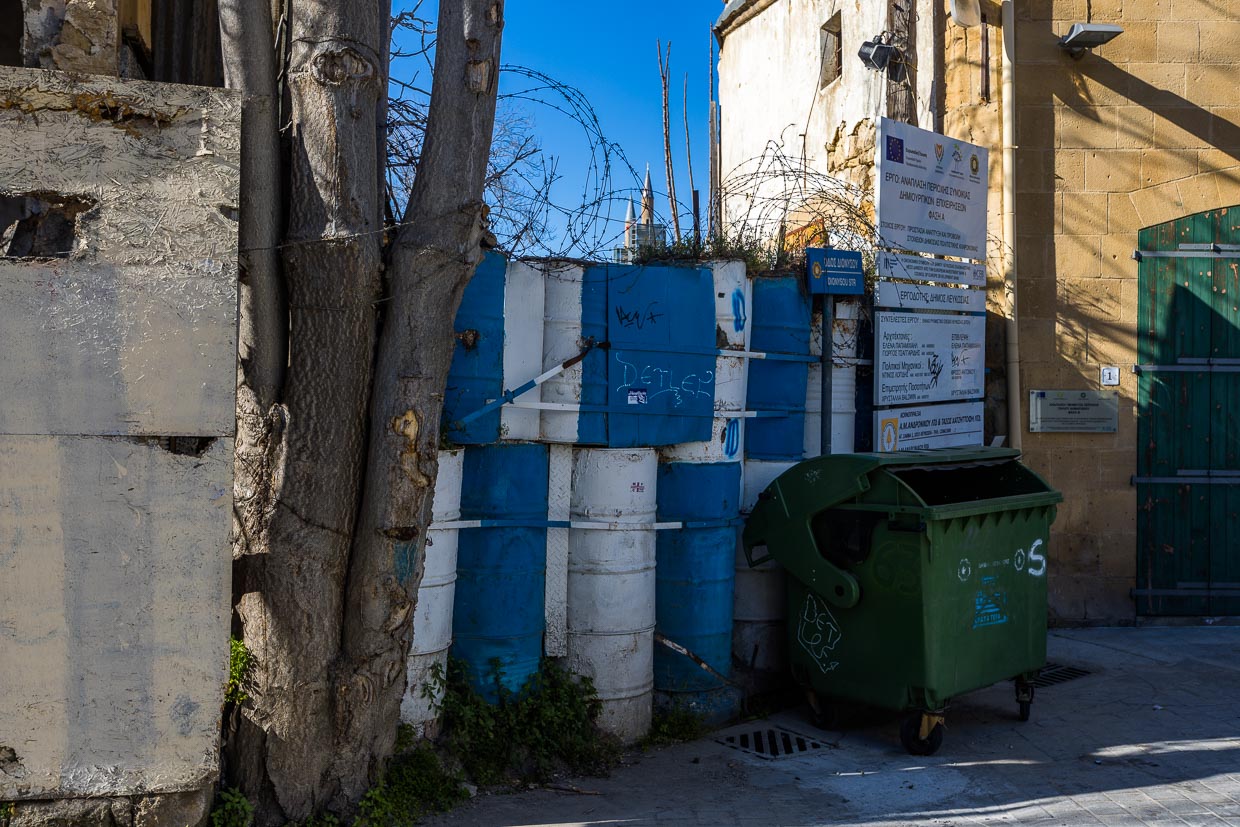
Starbucks and star architect
The Greek Cypriot south is a little more advanced in the rehabilitation of houses. But over the years, the charm of the historic city center has suffered here as well. Ledra Street, which is passed by everyone who uses the checkpoint in the old town, is dominated by Western chain stores. Here, the focus was on Starbucks instead of Turkish Coffee, and star architects were hired to revitalize the urban problem areas. Today, Ledra Street leads directly to a lavishly redesigned square.
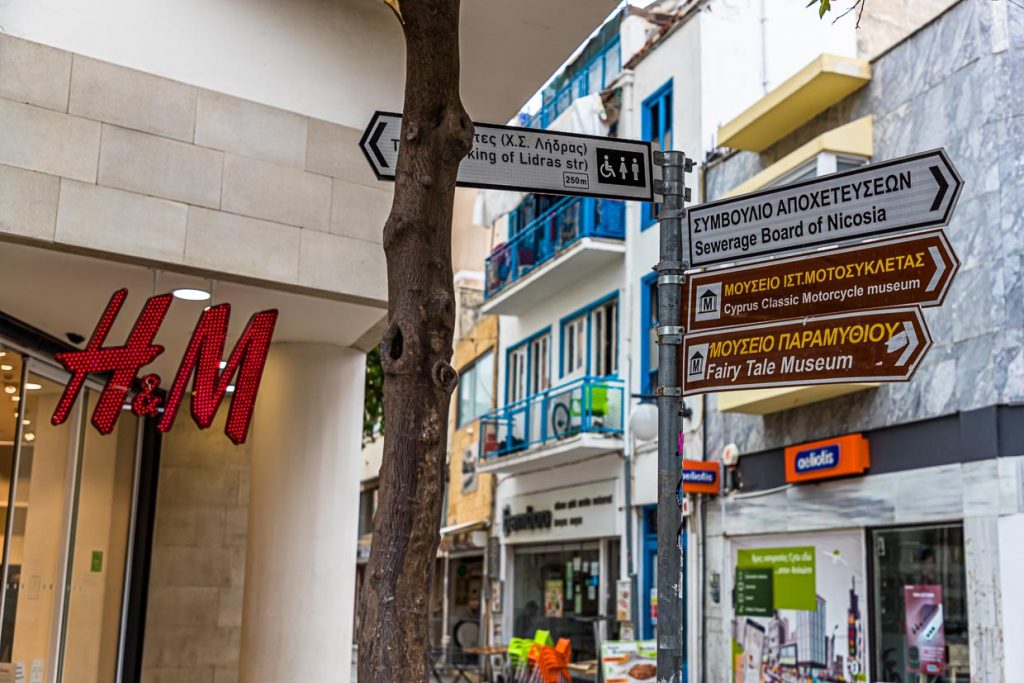
Elefthería Square was completed in 2021 according to plans by Zaha Hadid Architects (London) after 11 years of construction. Geometric elements dominate on two levels. The incorporation of the old Venetian city wall from the 16th century and the use of the old moat as a green space is exciting. The design by star architect Zaha Hadid picks up on the themes of separation and division that characterize Cyprus and Nicosia in particular. The forms refer to the basic shape of the old fortress, a circle with the jags of the eleven bastions. The overall urban planning concept goes far beyond the design of the square and should one day represent the reunification of the city and the island. Political solutions for this are currently not in sight. This makes it all the more important for travelers and locals to be able to commute between the two parts of the city without much effort, in order to get their own impression and cultivate friendships.
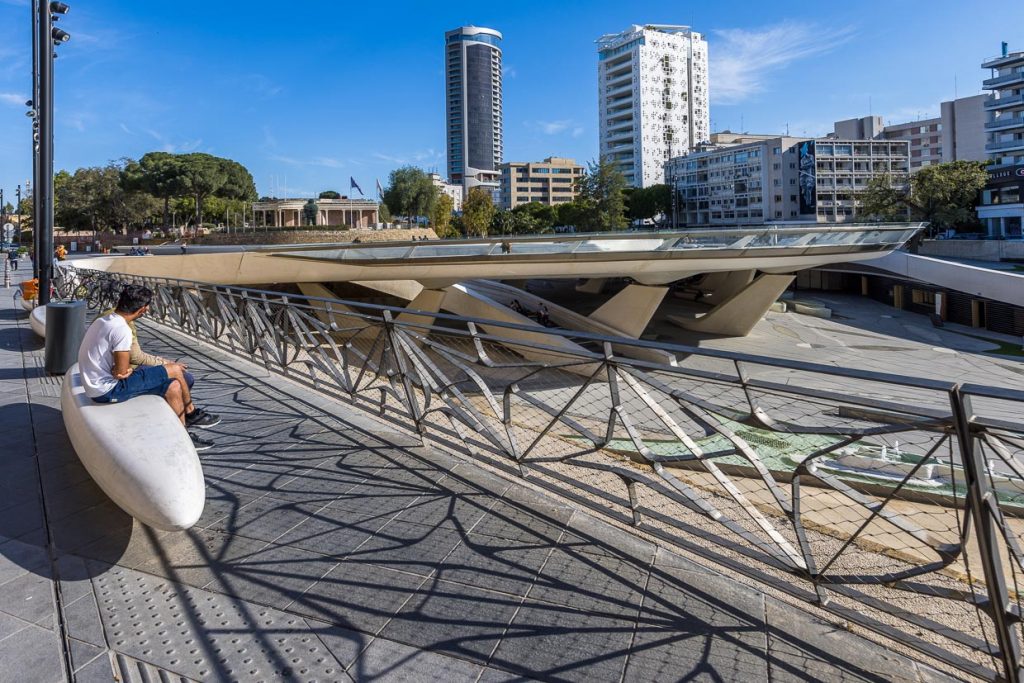
In the north, too, Nelin Tunç tells us, the rehabilitation process is picking up speed. Paradoxically, this also has to do with the pandemic. The border crossings were closed again during the Corona period. The young people who were used to visiting clubs and restaurants in the south of the city discovered their own part of town. This remained the case even after the pandemic. Since beer is cheaper in northern Cyprus and going to restaurants is more affordable, more Cypriots and tourists also come to the north.
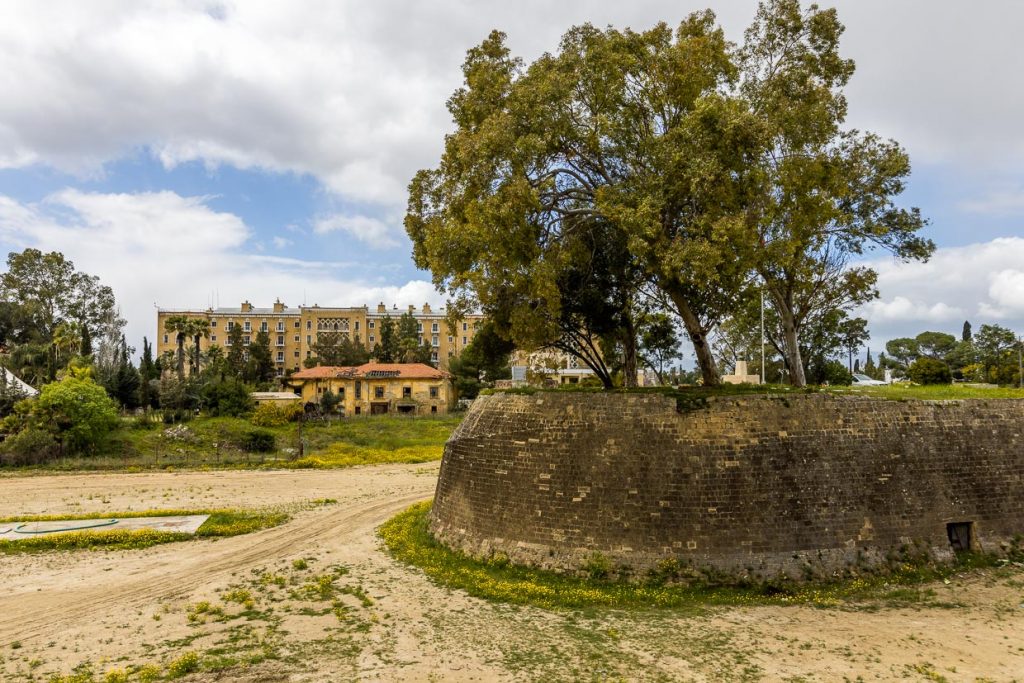
Buffer zone in view
Nelin Tunç also leads her groups to less known corners of Nicosia. On the way to the buffer zone, they pass through the Samanbahçe neighborhood. It is the first social housing project in Cyprus. The whitewashed houses were built between 1918 and 1925 by the Saban Pasha Foundation. The complex consists of 70 houses. The hexagonal well in the center of the complex served as the central water supply for the residents. Each house consists of two rooms, bathroom, kitchen and a private courtyard. At that time, only local building materials were used, adapted to the climatic conditions. The houses are still inhabited today.
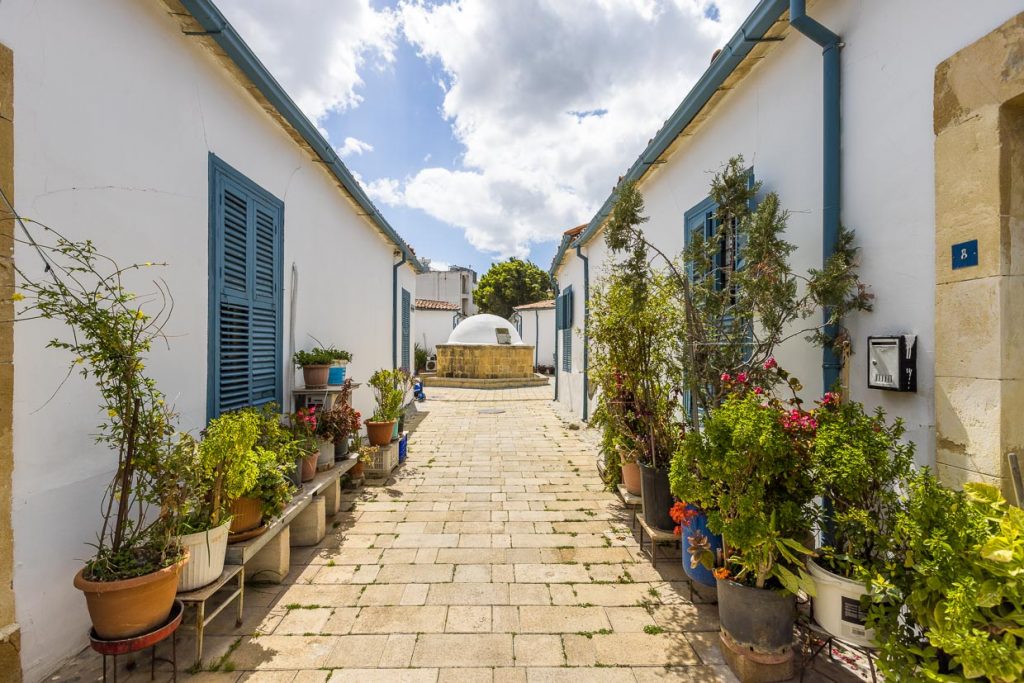
With a diameter of 1.6 kilometers and divided into two halves, one quickly encounters the Venetian city wall that encloses the old town when walking around the city. Along the old moat with a direct view of the south of the city is the former luxury hotel Ledra Palace. It has long been the headquarters of the UN peacekeeping mission. There is also a border crossing here that can be used by pedestrians. The buffer zone here is much wider than in the old town. Just past the Greek Cypriot checkpoint is the Goethe Institute, which offers many bi-communal projects for the urban community. A little further on is the UN headquarters. You pass a photo exhibition documenting the last official talks on reunification. Only after a few hundred meters does the Turkish-Cypriot border post follow.
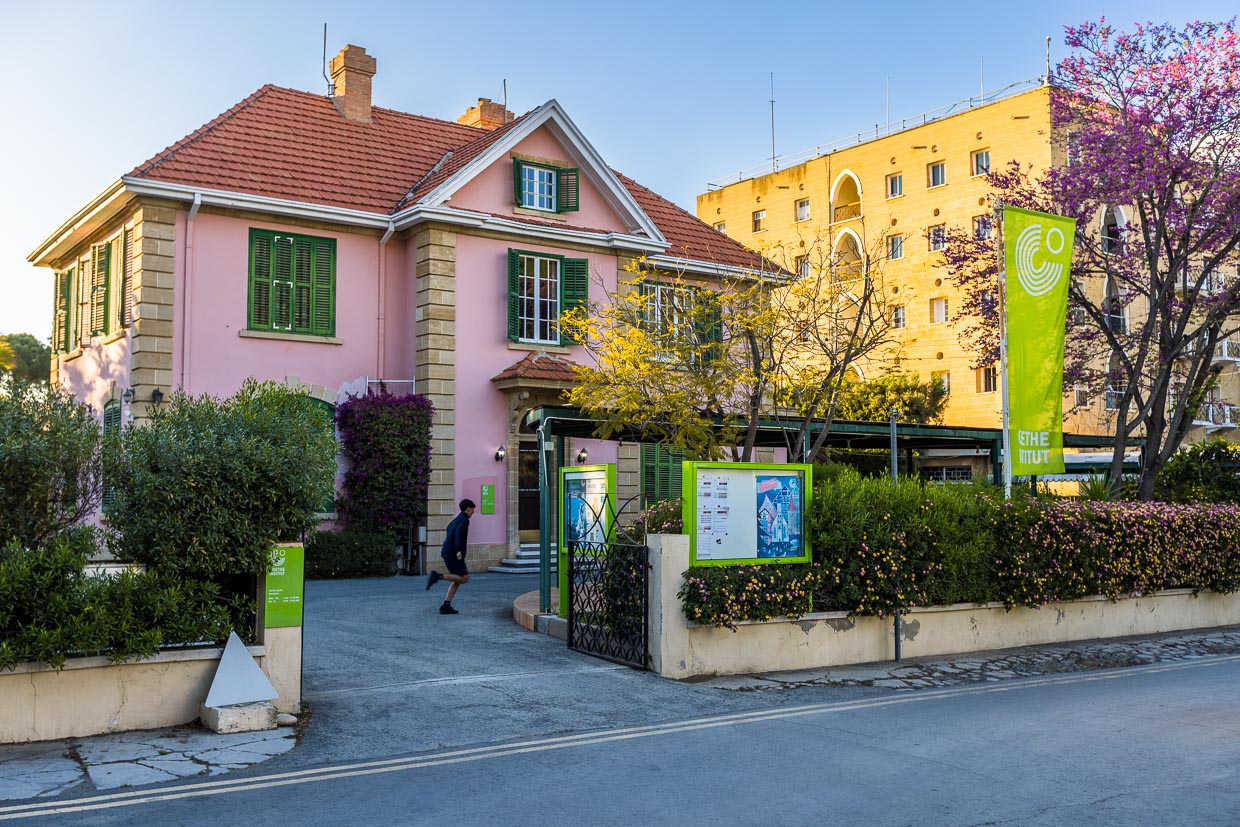
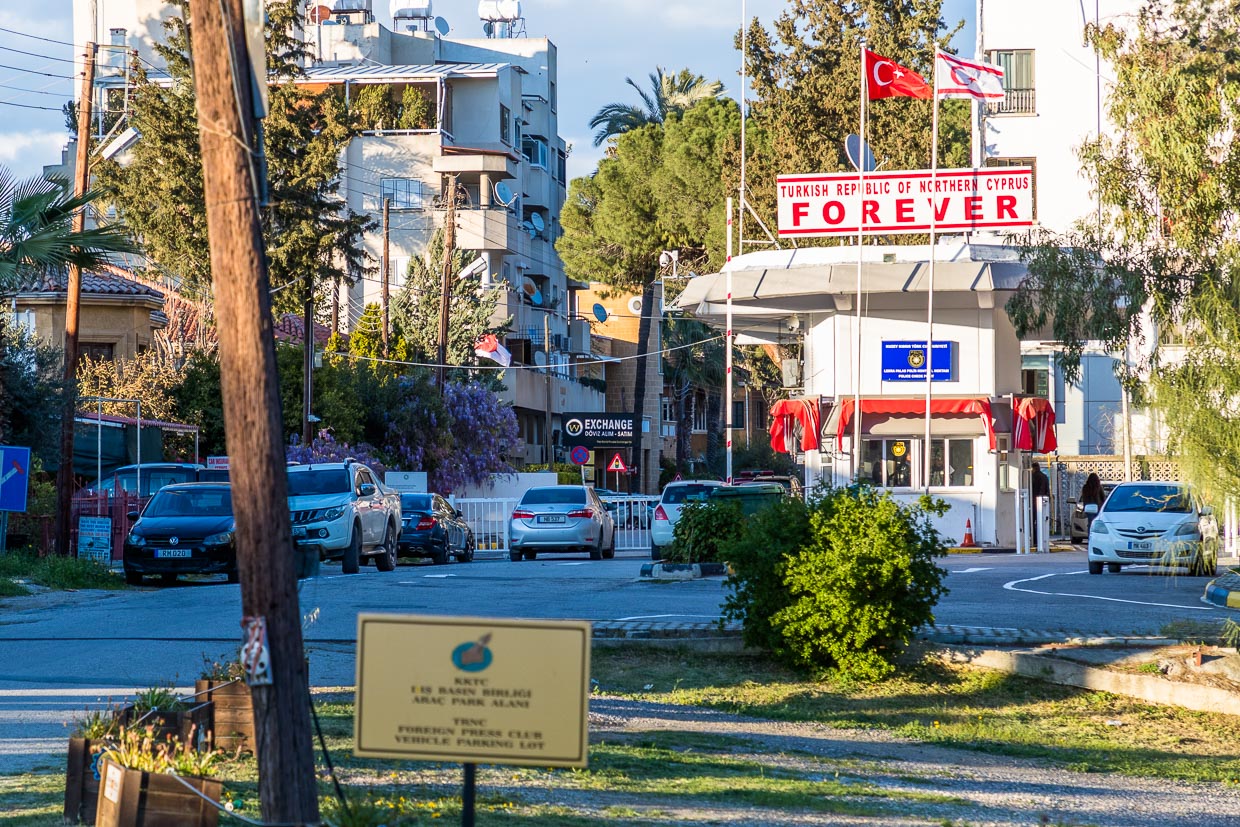
In addition to all the border experiences one can literally walk through in Nicosia, there are also stories that tell of community and the quest for coexistence and reunification of the island. Nelin Tunç leads her group to a fence above the Venetian city walls and points to an unadorned square just beyond the fence. It is the only place along the Green Line where people from both parts of the city can see each other. When the borders were closed again during the pandemic, she says, the bi-communal choir met here and Cypriots from both parts sang together. The Büyük Han Coffee Club is another example of the Cypriots’ sense of community. For the past 20 years, they have been meeting weekly in the Great Caravanserai.
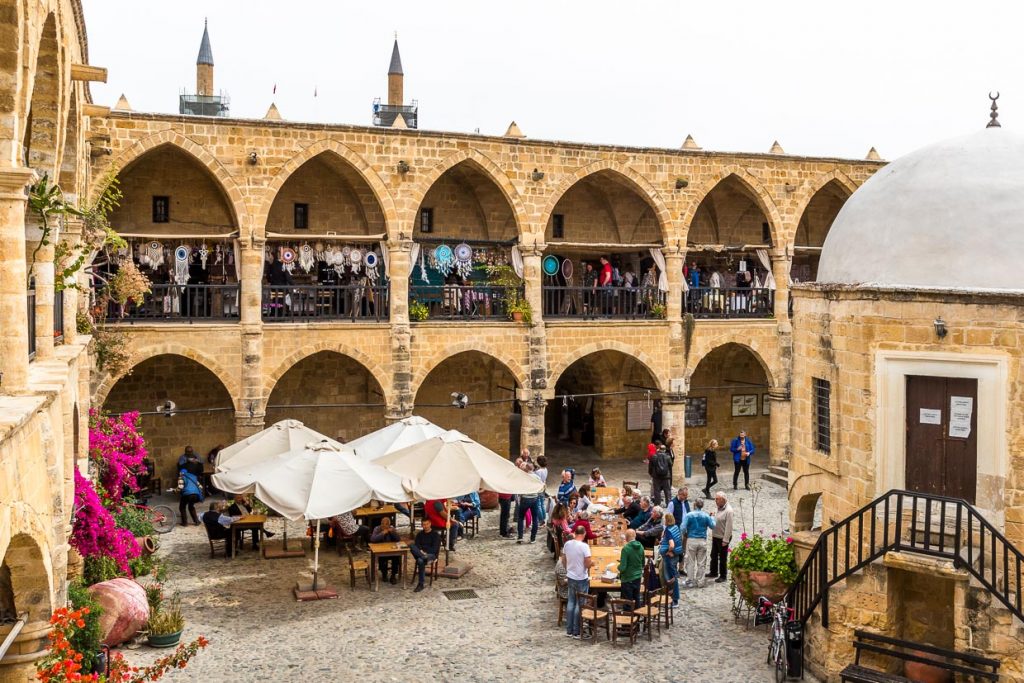
Travel tip – Travel without borders
To overcome the borders in one’s own mind, it is helpful to look for local tour operators and guides when preparing for the trip, who assist travelers in visiting both parts of Cyprus. Driving a rental car from north to south or vice versa is nowhere near as easy as crossing the checkpoints in Nicosia on foot. Cyprus Travel is a resident and also German speaking tour operator that offers tours to all regions of Cyprus and wants to encourage crossing the Green Line. From rental car tours, walking tours, day trips to cultural sites, island tours of several days with hotel booking, to city tours, everything is available that makes the island of Cyprus. A city tour of Nicosia with Nelin Tunç is also included.
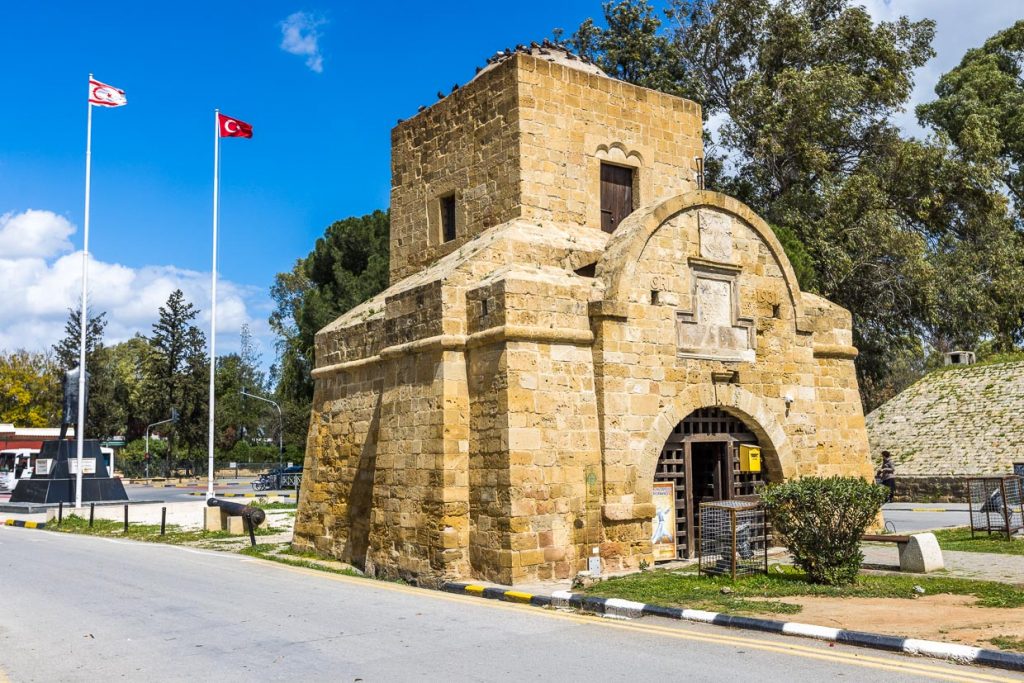
At the end of the city tour, Nelin Tunç takes us to a very special place for her. Directly at the Kyrenia Gate, at the entrance to the park along the old city wall, are the sculptures of two men with dogs. She puts her hand on the shoulder of one of them and introduces us to her father. Kemal Tunç was a well-known and popular Cypriot actor, theater director and author. He wrote the skits about Alikko and Caher, which are about the everyday life of the Northern Cypriots in the troubled and dramatic 1960s. Nelin Tunç, who studied architecture in Vienna, offers her guided tours of Nicosia and other cities and regions of Cyprus in German, Turkish and English.
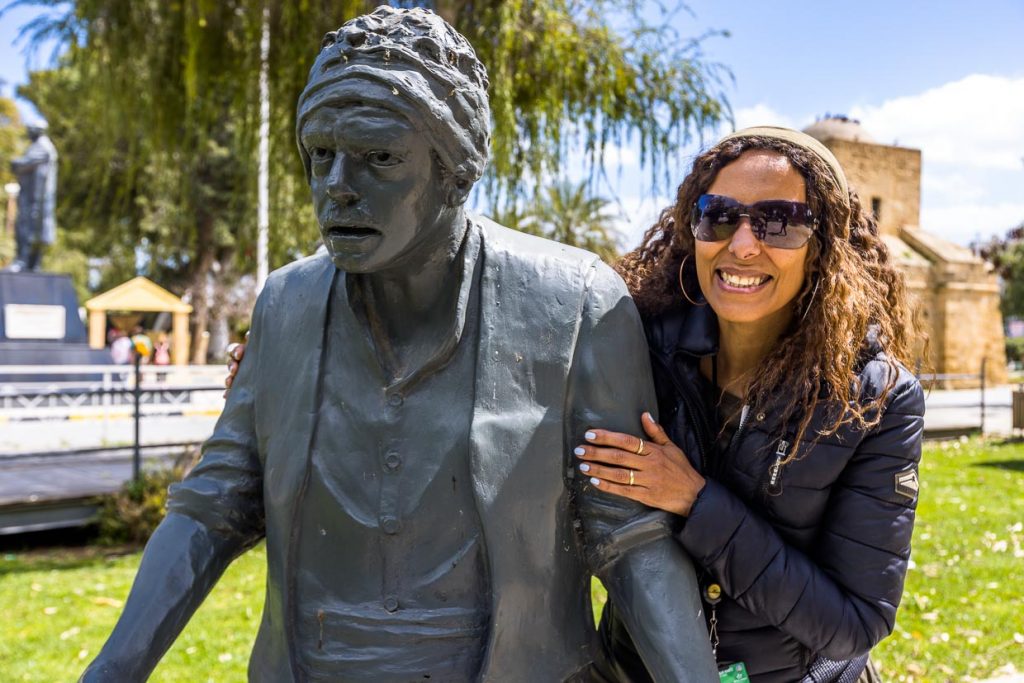
The research trip was supported by Cyprustravel.

